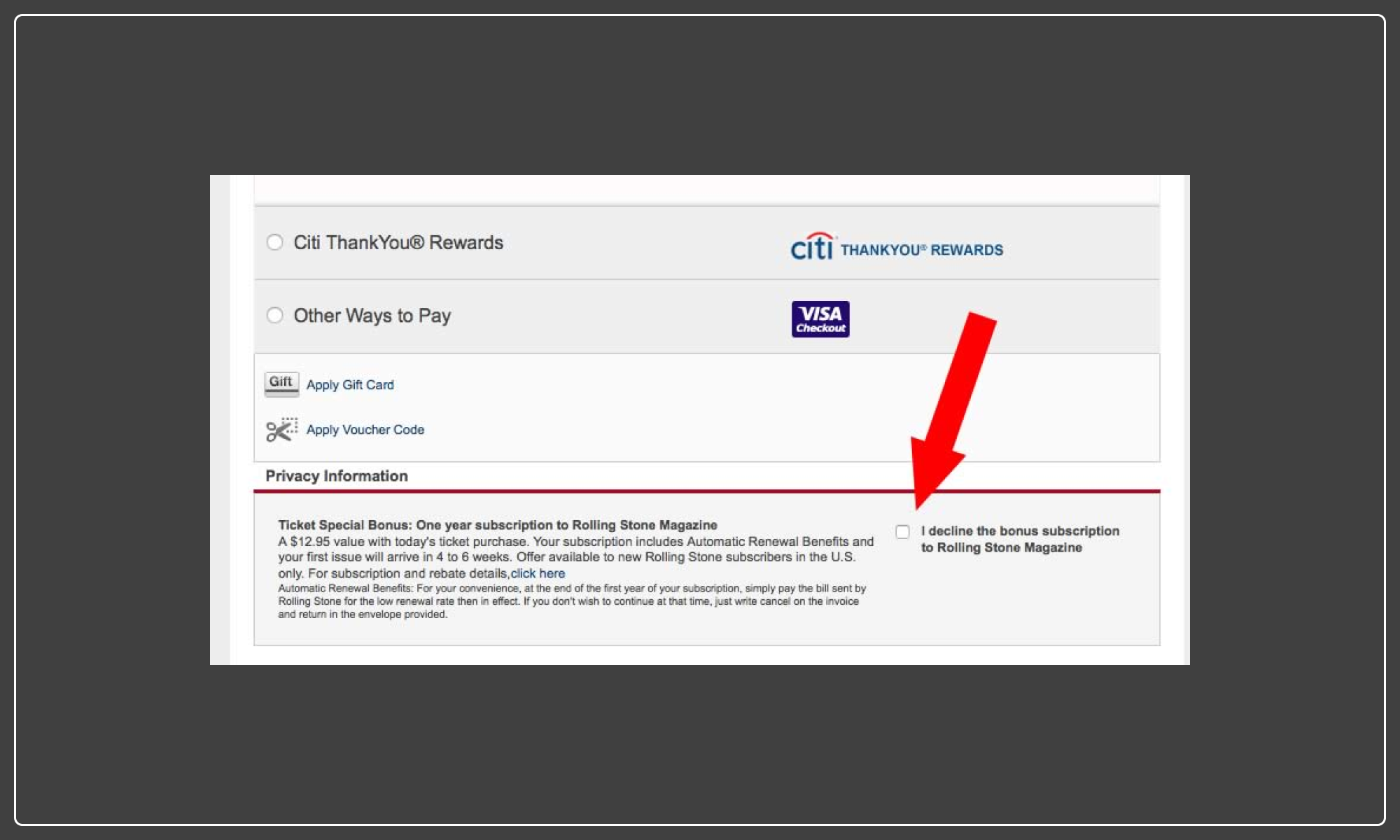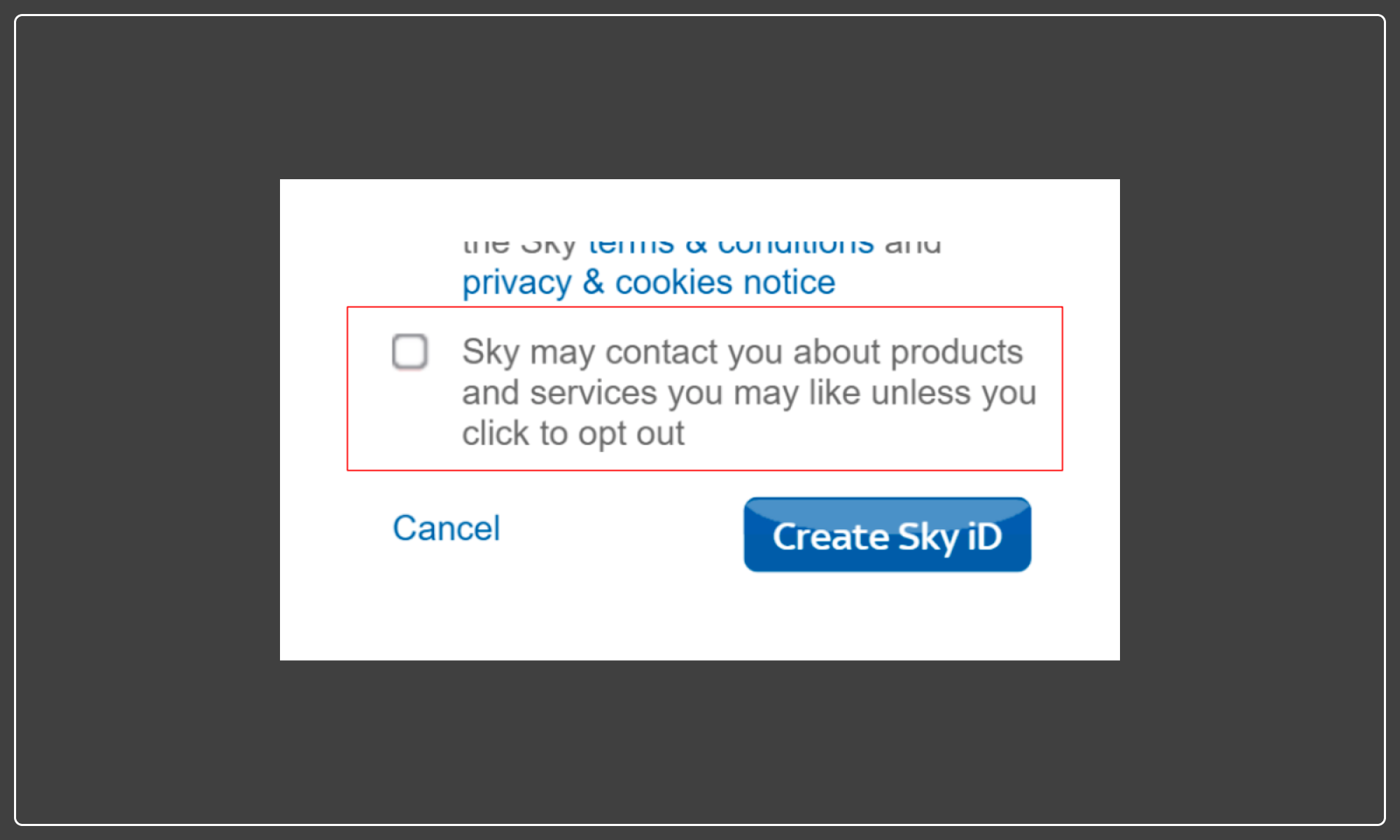5 dark patterns that exploit your attention—and could steal your money
Dark patterns are everywhere. Here are five that you may experience—and why you should pay more attention while online.

In 2010, User Experience specialist Harry Brignull coined the term dark patterns to identify tricks that websites and apps use in order to force people to make unintended actions, like signing up for subscription services or paying hidden fees. (He now calls it deceptive design, though most people still recognize the term as dark patterns.)
Since most of us are skimmers—we don’t read entire blocks of text, especially when it comes to user agreements or terms and conditions—companies exploit our impatience by manipulating psychology to their advantage.
Bignall has identified over 400 examples of dark patterns in his Hall of Shame; he also regularly shares examples on his Twitter feed. While some patterns attempt to manipulate seemingly innocuous behaviors (like getting you to sign up for a newsletter), Brignull recently stated that “the worst examples are the ones that have a real outcome of harm for consumers. And one of the main outcomes of harm is around money.”

While deceptive design is everywhere—a large-scale Princeton study that analyzed 53,000 product pages from 11,000 websites found 1,818 instances of 15 types of dark patterns—Brignull has noticed an uptick in regulations in America and Europe over the last few years.
One of the great things about the United States is you have all these class-action lawsuits, which are a great way of getting companies to step into line… And the more of them that happen, the more aware other companies will be. So these big sort of spotlight cases where big fines are enacted are really, really good for consumers, because it’ll make these other companies think twice before they do these things.
While regulations are progressing, companies continues to exploit consumers. Below are five common dark patterns that attempt to steal your attention and, at times, force you into spending more money.

Confirmshaming
We all know the power of shame. In lieu of police officers on every street, public speedometers change driving behavior. Putting a photo of a face on a company refrigerator reduces employees stealing other people’s food. Humans are social animals, and we don’t like the feeling of being watched—or that we’re not making the right decision.
Which is where confirmshaming comes in. Companies attempt to guilt you into a behavior—signing up for a newsletter or getting a “free guide” are common tactics. Instead of just listing “yes” or “no” as the option, prompts are a bit more personal, and guilt-inducing.
The affirmative option tends to be bright and bold while clicking “no” is often presented with a small, gray font hidden somewhere on the page.
For example, one email client featured the “Yes, I want it” action in a bright blue box, while the harder-to-see “no” option read “I don’t want smarter email.”
Another business seeking to rope potential customers in gave the options to sign up for a sale product newsletter as “Heck yeah” and “Nope, I’m rich.”
Bottom line: if you’re being shamed, you probably don’t want to support that business. That’s no way to build trust in a product or service.

Sneak into basket
Have you ever made a purchase by quickly clicking through only to receive a receipt with a higher-than-expected price? This occurs often with hosting services, which tack on unnecessary upgrades right before checkout. If you don’t notice that you have to uncheck a box to not pay for extra features, you’ve been affected by a dark pattern.
Record clubs have long offered a version of this called negative option billing, in which you receive an album every month unless you specifically cancel the subscription.
While some such businesses are upfront about the fact that you’ll get a deal if you agree to a subscription, others automatically sign you up. And since they have your credit card info, you might not discover this dark pattern until an unrequested album arrives in the mail—along with an unexpected credit card charge.
Bottom line: Always read the entire basket before clicking confirm. And if you get a receipt with items you didn’t intend on purchasing, immediately contact the business.

Roach motel
Companies make it very easy for you to sign up for services or purchase products. Some of them make it extremely difficult for you to cancel.
This is known as a roach motel: easy to get in, (nearly) impossible to get out.
If you’ve ever subscribed to a service with one-click and then had to call a phone number and were put on hold for an hour before reaching a customer service agent, you’ve been in a roach motel.
Another tactic is to force users to check a nearly-hidden box to decline an action that you didn’t want in the first place.
Bottom line: This is not a motel you want to visit. Carefully read everything you sign up for—including the fine print. Otherwise, you might find yourself stuck in a situation that won’t be nearly as easy to get out of.

Trick questions
File this dark pattern in the “read carefully” part of your brain as well. Companies love to exploit our “scan quickly” heuristic by embedding checkboxes that feature actions that are the opposite of what we expect.
An example: forcing you to opt out of a newsletter or recurring charge. Some companies make this dark pattern even harder to identify by mixing and matching the type of response, such as making one box an opt-in to a newsletter or charge and another box an opt-out.
Bottom line: Make sure to carefully read each checkbox before hitting submit. Businesses bank on your inattention to detail.

Disguised ads
We’ve become so immune to ads that it takes quite a bit of work to make us click through. But businesses will never stop trying to trick us. Disguised ads are an example.
You’ll often find these ads on “free” websites that let you convert or download audio or video files. After entering the file or URL, the most prominent button on the page says “download now,” which, in fact, opens another page completely unrelated to what you’re doing on the site.
This practice is so egregious that some downloading sites force you to click the ad at least once before serving the link that you’re actually looking for. We might have to reconsider calling these “free” services.
Bottom line: Read before clicking any button! And if you’re on a site that forces you to click-through ads (and likely add cookies to your computer), consider finding another service, or paying for the service you need. The runaround might not be worth the “free” version.